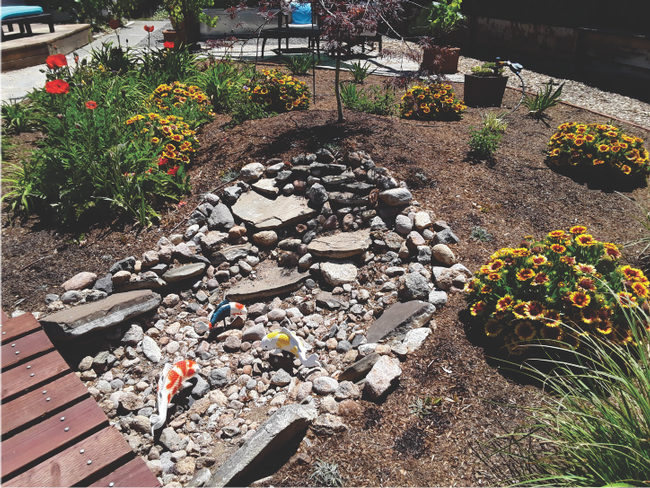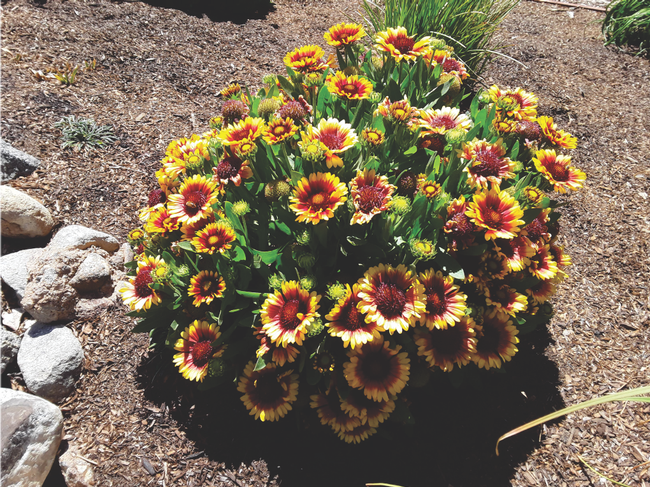Melody Kendall

The plants in the new landscape have been in the ground since October, and though some of them are slower than others, they all seem to be settling in nicely.
Our Gaillardia x grandiflora or blanket flower plants are among the overachievers in our new landscape. They were in 6” pots last October and bloomed their hearts out. Their new season of blooms started in March with an explosion of color. They just keep getting brighter, bolder and more prolific as the months progress.
Gaillardia prefers full sun, well-drained soil and has low water needs once established. These are all good attributes which fit right into our low-water garden plans, but the main reason we chose the blanket flower was because it attracts a diverse population of bees. The day we planted the gaillardia plants the bees were already checking out the flowers, and by the next day the plants were buzzing. Because of the gaillardia's long blooming season, the bees will have a ready source of nectar and pollen from early spring through late fall.

Another interesting note about the gaillardia plant is that it is considered a ‘Zone 1 firewise species plant'. This means that the blanket flower plant, with its fire-resistance score of 8, can be included in the Zone 1 area around your home. A ‘firewise plant' means this plant is less likely to burn or will burn less hot and usually means that the plant is considered a low-maintenance and slow growing plant. Remember, though, that ALL plants will burn under extreme conditions.
I decided to enjoy my blanket flower plants from afar. I'll be sitting in my deck chair with a glass of iced tea, enjoying the spectacular splashes of color while listening to the buzzing of the bees.
Master Gardeners are following recommended social distancing guidelines that keep everyone safe, Napa Master Gardeners are available to answer garden questions by email: mastergardeners@countyofnapa.org. or phone at 707-253-4143. Volunteers will get back to you after they research answers to your questions.
Visit our website: napamg.ucanr.edu to find answers to all of your horticultural questions.
Photo credits: Mel Kendall
Informational Links:
Monrovia-Gaillardia https://www.monrovia.com/sunset-snappy-blanket-flower.html
UCMG Marin-Planting for success http://marinmg.ucanr.edu/CARE/PLANTING/
Xerces Society https://xerces.org/blog/plants-for-pollinators-blanketflower
International Journal of Molecular Sciences-sesquiterpene lactones benefits to plants & people
https://www.ncbi.nlm.nih.gov/pmc/articles/PMC3709812/
UCMG Sonoma-Firewise landscaping http://sonomamg.ucanr.edu/Firewise_Landscaping/